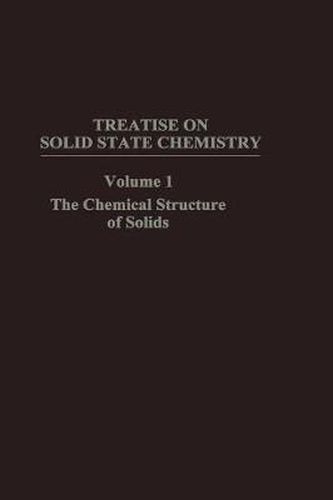Readings Newsletter
Become a Readings Member to make your shopping experience even easier.
Sign in or sign up for free!
You’re not far away from qualifying for FREE standard shipping within Australia
You’ve qualified for FREE standard shipping within Australia
The cart is loading…






This title is printed to order. This book may have been self-published. If so, we cannot guarantee the quality of the content. In the main most books will have gone through the editing process however some may not. We therefore suggest that you be aware of this before ordering this book. If in doubt check either the author or publisher’s details as we are unable to accept any returns unless they are faulty. Please contact us if you have any questions.
The last quarter-century has been marked by the extremely rapid growth of the solid-state sciences. They include what is now the largest subfield of physics, and the materials engineering sciences have likewise flourished. And, playing an active role throughout this vast area of science and engineer- ing have been very large numbers of chemists. Yet, even though the role of chemistry in the solid-state sciences has been a vital one and the solid-state sciences have, in turn, made enormous contributions to chemical thought, solid-state chemistry has not been recognized by the general body of chemists as a major subfield of chemistry. Solid-state chemistry is not even well defined as to content. Some, for example, would have it include only the quantum chemistry of solids and would reject thermodynamics and phase equilibria; this is nonsense. Solid-state chemistry has many facets, and one of the purposes of this Treatise is to help define the field. Perhaps the most general characteristic of solid-state chemistry, and one which helps differentiate it from solid-state physics, is its focus on the chemical composition and atomic configuration of real solids and on the relationship of composition and structure to the chemical and physical properties of the solid. Real solids are usually extremely complex and exhibit almost infinite variety in their compositional and structural features.
$9.00 standard shipping within Australia
FREE standard shipping within Australia for orders over $100.00
Express & International shipping calculated at checkout
This title is printed to order. This book may have been self-published. If so, we cannot guarantee the quality of the content. In the main most books will have gone through the editing process however some may not. We therefore suggest that you be aware of this before ordering this book. If in doubt check either the author or publisher’s details as we are unable to accept any returns unless they are faulty. Please contact us if you have any questions.
The last quarter-century has been marked by the extremely rapid growth of the solid-state sciences. They include what is now the largest subfield of physics, and the materials engineering sciences have likewise flourished. And, playing an active role throughout this vast area of science and engineer- ing have been very large numbers of chemists. Yet, even though the role of chemistry in the solid-state sciences has been a vital one and the solid-state sciences have, in turn, made enormous contributions to chemical thought, solid-state chemistry has not been recognized by the general body of chemists as a major subfield of chemistry. Solid-state chemistry is not even well defined as to content. Some, for example, would have it include only the quantum chemistry of solids and would reject thermodynamics and phase equilibria; this is nonsense. Solid-state chemistry has many facets, and one of the purposes of this Treatise is to help define the field. Perhaps the most general characteristic of solid-state chemistry, and one which helps differentiate it from solid-state physics, is its focus on the chemical composition and atomic configuration of real solids and on the relationship of composition and structure to the chemical and physical properties of the solid. Real solids are usually extremely complex and exhibit almost infinite variety in their compositional and structural features.